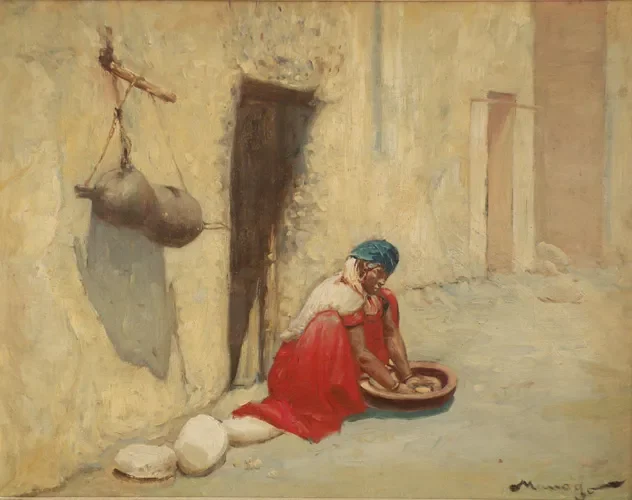A Dish Rooted in History
Couscous originated in North Africa, where it was traditionally made from wheat semolina, sorghum, or rice. The dish traveled to the Iberian Peninsula during the Moorish occupation between the 8th and 15th centuries. Portuguese colonizers later introduced it to Brazil, where it evolved into a unique, corn-based version that quickly became a staple in the Northeast.
Over time, cuscuz became a symbol of resilience and tradition, especially among Afro-Brazilian communities. Initially a survival food for enslaved people, it later gained widespread popularity and is now deeply embedded in Brazilian culinary heritage. Today, its importance is further solidified by its UNESCO recognition, underscoring its cultural significance.
How Brazilian Couscous is Made

Unlike Moroccan couscous, which is made from wheat, the Brazilian version is crafted from flaked cornmeal (fubá de milho). The preparation is simple: the cornmeal is hydrated with water and salt and then steamed in a special pan called a cuscuzeira. This method preserves its slightly grainy texture while allowing it to absorb flavors from various accompaniments.
Brazilian cuscuz is incredibly versatile. It can be eaten plain with butter, paired with eggs and cheese for breakfast, or served as a side dish for meats, fish, or stews. Some variations incorporate vegetables, shredded chicken, or even sweet ingredients like coconut and condensed milk for a dessert version.
Why You Should Try It
Aside from its rich history and cultural significance, Brazilian couscous is also a nutritional powerhouse. It is high in fiber, which promotes digestive health and keeps you feeling full for longer. Additionally, it is packed with essential vitamins and minerals, including:
- Vitamin A and B1 – Important for maintaining healthy skin, vision, and energy levels.
- Iron and Magnesium – Essential for muscle function and preventing anemia.
- Zinc and Antioxidants – Help strengthen the immune system and fight inflammation.
Given its affordability, accessibility, and health benefits, it’s no wonder cuscuz is a beloved staple across Brazil.
Fun Facts About Brazilian Couscous

- Though it originated in North Africa, Brazilian cuscuz has evolved into a distinct dish made with corn rather than wheat.
- The first known written record of couscous appeared in a 13th-century North African cookbook.
- The dish became popular in the Iberian Peninsula before making its way to Brazil via Portuguese colonization.
- In colonial Brazil, enslaved Africans used couscous as a staple food, adapting it with available ingredients.
- Today, it is one of the most widely consumed dishes in the Northeast, often found on breakfast tables.
- Brazilian cuscuz is among the most-searched recipes on YouTube, along with Brazilian pancakes and omelets.
- Unlike other types of couscous, the Brazilian version absorbs sauces and broths beautifully, making it an excellent pairing for rich stews and meats.
Authentic Brazilian Couscous Recipe

Now that you know more about the history and significance of Brazilian couscous, it’s time to try making it yourself!
Traditional Brazilian Couscous Recipe
Servings: 4
Preparation Time: 40 minutes
Difficulty Level: Easy
Ingredients:
- 3 cups flaked cornmeal (fubá de milho)
- 1 cup water
- 1 teaspoon salt
Preparation:
- In a large bowl, combine the flaked cornmeal, water, and salt. Mix well and cover with a clean kitchen towel.
- Let the mixture hydrate for about 25 minutes to ensure the cornmeal absorbs the moisture evenly.
- Transfer the hydrated mixture to a cuscuzeira (a traditional steaming pan for couscous). If you don’t have a cuscuzeira, a regular steamer will work.
- Steam over medium heat until you see steam escaping from the top of the pan (about 15 minutes).
- Remove from heat and serve hot. Enjoy it plain, with melted butter, eggs, cheese, or any of your favorite toppings!





